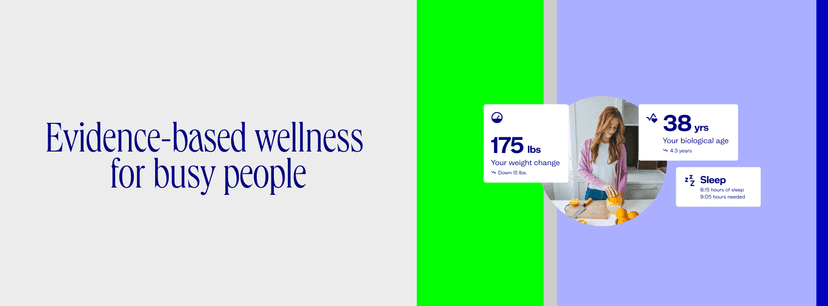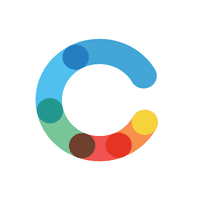Imagine knowing about a serious illness before you even feel sick. That's the big idea behind AI in healthcare diagnostics. It's not science fiction anymore. AI is starting to help doctors spot diseases super early, sometimes even before any symptoms show up. This could change how we deal with health problems, making things more personal and helping people get better faster. We're talking about a real shift in medicine, where computers help us stay healthier.
Key Takeaways
- AI helps find diseases early, leading to better outcomes.
- It makes treatment plans unique for each person.
- AI tools help doctors make good decisions.
- There are still challenges, like making sure the data is good and getting doctors to use the new tech.
- The future of AI in health includes smarter systems and using lots of different kinds of patient information.
The Power of AI in Healthcare Diagnostics
AI is changing healthcare, especially how we find and understand diseases. It's not just about faster results; it's about making things more personal and accurate. I think it's a pretty big deal, and here's why:
Early Disease Detection
AI can spot diseases way before we normally would. This is because it can look at tons of data and find patterns that humans might miss. Think about it: AI algorithms can analyze medical images, lab results, and even your health records to predict if you're at risk for something like heart disease or cancer. This early detection can lead to quicker treatment and better outcomes. For example, AI can analyze subtle changes in retinal scans to detect early signs of diabetic retinopathy, potentially preventing vision loss. It's like having a super-powered detective on the case, constantly looking for clues.
Personalized Treatment Plans
AI isn't just about finding diseases; it's also about figuring out the best way to treat them. By looking at your genetic information, lifestyle, and medical history, AI can help doctors create treatment plans that are tailored just for you. This means you're more likely to get the right treatment, at the right time, which can make a huge difference in how well you recover. For instance, AI can predict how you might respond to a specific drug based on your genetic makeup, helping doctors avoid prescribing medications that are likely to cause side effects or be ineffective. This personalized treatment approach is a game-changer.
Enhanced Clinical Decision Making
AI can also help doctors make better decisions. It can provide them with up-to-date information, research, and insights that they might not have access to otherwise. This can help them choose the best course of action for their patients, leading to better outcomes and fewer mistakes. It's like having a virtual assistant that's always there to provide support and guidance. AI algorithms can analyze complex medical literature and clinical trial data to provide doctors with evidence-based recommendations for treatment. This helps doctors stay informed and make the best possible decisions for their patients.
AI in healthcare isn't about replacing doctors; it's about giving them the tools they need to do their jobs even better. It's about making healthcare more efficient, more accurate, and more personalized. And that's something we can all get behind.
AI's Role in Diverse Medical Fields
AI isn't just a futuristic concept anymore; it's actively changing how we approach medicine across a bunch of different specialties. It's pretty cool to see how these algorithms are being used to tackle some really tough diagnostic challenges. Let's take a look at some specific areas where AI is making a real difference.
Neurological Disorder Prediction
AI is showing a lot of promise in predicting neurological disorders, sometimes even before symptoms become obvious. This is huge because early detection can lead to earlier interventions and potentially better outcomes. For example, machine learning models can analyze brain scans (MRIs, CTs) to identify subtle changes that might indicate the early stages of Alzheimer's disease or Parkinson's. It's not perfect, but it's getting better all the time. Plus, AI can help predict the likelihood of seizures in epilepsy patients by analyzing their EEG data. This allows doctors to adjust medication or implement other preventative measures. It's all about getting ahead of the curve.
Gastrointestinal Disease Diagnosis
Diagnosing gastrointestinal (GI) diseases can be tricky, often involving invasive procedures like endoscopies. AI is helping to change that. AI-powered image recognition can analyze endoscopic images and identify polyps, ulcers, and other abnormalities with impressive accuracy. This can help doctors make more informed decisions about treatment and reduce the need for unnecessary biopsies. Plus, AI can analyze patient data, including symptoms, medical history, and lab results, to help diagnose conditions like irritable bowel syndrome (IBS) or inflammatory bowel disease (IBD). It's like having an extra pair of eyes (and a really smart brain) to help with the diagnosis. The use of AI-driven technologies is really changing the game.
Ophthalmic Disease Management
Ophthalmology is another area where AI is making big strides. AI algorithms can analyze retinal images to detect early signs of diseases like diabetic retinopathy, glaucoma, and age-related macular degeneration (AMD). This is especially important because these diseases often have no noticeable symptoms in their early stages. Early detection and treatment can prevent vision loss. AI is also being used to personalize treatment plans for patients with ophthalmic diseases. By analyzing patient data and predicting how they are likely to respond to different treatments, doctors can make more informed decisions about which therapies are most likely to be effective.
AI's ability to process and analyze vast amounts of medical data is revolutionizing diagnostics. It's not about replacing doctors, but about giving them better tools to make more accurate and timely diagnoses. This ultimately leads to better patient care and improved outcomes.
Advancements in AI-Driven Diagnostic Models
AI is making huge strides in how we diagnose diseases. It's not just about faster results; it's about creating models that can see things human doctors might miss. Let's take a look at some of the key advancements.
Deep Learning Architectures
Deep learning is a game-changer. These architectures allow AI to analyze complex medical data with incredible accuracy. Think of it like this: traditional machine learning needs humans to tell it what features to look for, but deep learning figures it out on its own. For example, in ophthalmic diseases, deep learning models can analyze retinal images to detect diabetic retinopathy as accurately as human experts. This means earlier intervention and preventing vision loss. It's pretty amazing stuff.
Transfer Learning Applications
One of the biggest challenges in medical AI is the lack of data. Training a robust AI model requires a ton of examples, and in some rare diseases, that data just isn't available. That's where transfer learning comes in. It's like giving the AI a head start. Instead of learning from scratch, it uses knowledge gained from a different but related task. For instance, a model trained to identify objects in regular images can be adapted to analyze medical images, even with limited data. This speeds up development and improves accuracy, especially when dealing with smaller datasets. It's a smart way to diagnose diseases with less data.
Analyzing Complex Medical Data
AI's ability to sift through mountains of data is where it really shines. We're talking about medical images, electronic health records, genetic information, and even data from wearable devices. The key is that AI can find patterns and correlations that would be impossible for humans to spot. For example, in neurological disorders, deep learning models analyze MRI and PET scans to detect early signs of neurodegeneration. Similarly, for Parkinson’s disease, ML algorithms analyze gait patterns, voice recordings, and wearable sensor data to diagnose and monitor disease progression, improving patient management. This leads to earlier diagnoses, personalized treatment plans, and ultimately, better patient outcomes.
AI isn't meant to replace doctors, but to augment their abilities. By handling the tedious task of analyzing large datasets, AI frees up doctors to focus on what they do best: interacting with patients and making critical decisions based on a combination of data and human intuition.
Overcoming Challenges in AI Implementation
AI in healthcare diagnostics? Sounds amazing, right? But it's not all sunshine and rainbows. Getting these systems up and running smoothly comes with its own set of headaches. We need to be real about the hurdles if we want to see AI truly transform how we treat patients.
Data Quality and Interpretability
Okay, so imagine feeding an AI a bunch of messy, incomplete data. Garbage in, garbage out, as they say! The quality of the data is super important. If the data is biased or just plain wrong, the AI's predictions will be too. And even if the data is good, sometimes it's hard to understand why the AI made a certain decision. This lack of interpretability can make doctors hesitant to trust the AI's judgment.
Integration into Clinical Workflows
Think about how a doctor's office runs. It's a complex system with lots of moving parts. Now, try to shove a brand-new AI system into the mix. It's not always a perfect fit! Getting AI to work smoothly with existing clinical workflows can be a real challenge. Doctors and nurses need to be trained on the new system, and the AI needs to be integrated into their daily routines. If it's too clunky or time-consuming, they just won't use it.
Cost of Development and Adoption
Let's talk money. Developing and implementing AI diagnostic tools isn't cheap. You've got the cost of the AI itself, plus the cost of the hardware, the data, and the training. And then there's the ongoing maintenance and updates. For smaller hospitals or clinics, the cost of development can be a major barrier to adoption.
It's not just about the initial investment, either. We need to think about the long-term costs, like data storage, security, and the potential need for specialized AI personnel. If we don't address these financial concerns, AI diagnostics could end up being a luxury only available to the wealthy.
Future Directions for AI in Healthcare Diagnostics
AI's journey in healthcare diagnostics is far from over. We're just scratching the surface of what's possible. The next few years promise exciting developments that could revolutionize how we approach disease detection and treatment. It's not just about making things faster; it's about making them smarter, more personalized, and more accessible.
Advancing Explainable AI
One of the biggest hurdles right now is trust. Doctors are hesitant to rely on AI if they don't understand how it arrives at a diagnosis. That's why explainable AI (XAI) is so important. We need AI models that can not only predict disease but also provide clear, understandable reasons for their predictions. This will involve developing new algorithms and visualization tools that make AI decision-making more transparent. It's about building confidence in the technology so that healthcare professionals can use it effectively.
Leveraging Diverse Data Modalities
Right now, a lot of AI diagnostic tools rely on a single type of data, like medical images or lab results. But the human body is complex, and disease often manifests in multiple ways. The future of AI diagnostics will involve integrating diverse data modalities, such as:
- Genomic data
- Wearable sensor data
- Lifestyle information
- Environmental factors
By combining all of this information, AI models can get a more complete picture of a patient's health and make more accurate predictions. Imagine an AI that can analyze your blood test results, track your sleep patterns, and monitor your activity levels to identify early signs of heart disease. That's the power of diverse data modalities.
Integrating with IoT and Blockchain
Imagine a world where your smart devices are constantly monitoring your health and sending data to your doctor. That's the promise of the Internet of Things (IoT) in healthcare. But to make this a reality, we need secure and reliable ways to transmit and store all of this data. That's where blockchain comes in. Blockchain can provide a decentralized, tamper-proof ledger for storing patient data, ensuring its security and privacy. Integrating AI with IoT and blockchain could lead to a new era of proactive and personalized healthcare. For example, brain tumor database management could be revolutionized with secure, AI-driven analysis.
The convergence of AI, IoT, and blockchain has the potential to transform healthcare from a reactive to a proactive model. Instead of waiting for patients to get sick, we can use these technologies to identify risks early and intervene before disease develops. This could lead to significant improvements in patient outcomes and a more sustainable healthcare system.
Impact of AI on Patient Outcomes
AI's integration into healthcare isn't just about fancy algorithms; it's about real changes in how patients experience care. We're talking about potentially life-altering improvements, from catching diseases earlier to getting treatments tailored just for you. It's a big deal, and it's only going to get bigger.
More Precise Diagnoses
AI has the potential to sift through mountains of data – medical histories, lab results, imaging scans – to spot patterns that might escape even the most experienced doctors. This can lead to diagnoses that are not only faster but also more accurate. Think about it: fewer misdiagnoses, fewer unnecessary procedures, and more patients getting the right treatment, right away. That's a win for everyone.
Timely Interventions
Imagine knowing you're at risk for a disease before you even start showing symptoms. That's the promise of AI. By predicting potential health problems, doctors can intervene earlier, potentially preventing the disease from progressing or even developing in the first place. This proactive approach could revolutionize healthcare, shifting the focus from treating illness to maintaining wellness. For example, AI can help in managing Non-Communicable Diseases by enabling earlier and more precise diagnoses.
Improved Patient Care
AI isn't meant to replace doctors; it's meant to augment their abilities. By taking on some of the more time-consuming and data-intensive tasks, AI can free up doctors to spend more time with their patients, providing more personalized care and attention. Plus, AI can help ensure that patients receive the most up-to-date and evidence-based treatments available. It's about making the whole healthcare experience better, from start to finish.
AI offers the chance to make healthcare more efficient, more effective, and more patient-centered. It's not a magic bullet, but it's a powerful tool that, when used responsibly, can significantly improve the lives of patients around the world.
Conclusion
So, what's the big takeaway here? AI, especially the fancy stuff like machine learning and deep learning, is really changing how we think about health. It's not just some futuristic idea anymore; it's already helping doctors spot problems way earlier than before. Imagine catching a serious illness before you even feel sick! That's the dream, right? But it's not all smooth sailing. We've still got to figure out how to make these AI systems super fair, easy to understand, and affordable for everyone. Plus, getting them to fit into how doctors already work is a whole other challenge. Still, the potential is huge. As we keep working on these things, AI could totally change how we stay healthy, making sure more people get the right care at the right time. It's a pretty exciting time to be alive, especially when it comes to health.
Frequently Asked Questions
How does AI help doctors find diseases?
AI helps doctors by looking at lots of patient information, like medical images and health records. It can spot tiny patterns that humans might miss. This helps doctors find diseases earlier and make better treatment plans for each person.
What kinds of diseases can AI help detect?
AI can help find diseases like brain problems, stomach issues, and eye conditions. It can look at scans, lab results, and other data to give doctors a clearer picture of what's going on.
How does AI learn to spot diseases?
AI uses special computer programs called 'deep learning' that are really good at learning from huge amounts of data. It's like teaching a computer to recognize things by showing it millions of examples. This helps it get better at finding disease signs.
What are some difficulties with using AI in healthcare?
One big challenge is making sure the AI's data is good and that we can understand how the AI makes its decisions. Also, getting AI to work smoothly with how doctors already do things can be tricky, and building these systems can cost a lot of money.
What's next for AI in finding diseases?
In the future, AI will get even smarter at explaining how it reaches its conclusions. It will also use more kinds of health data, and might even connect with smart devices and secure online systems to make healthcare even better and safer.
How does AI help patients directly?
When AI helps find diseases early, patients can get treatment sooner. This often means the treatment works better, and people have a higher chance of getting healthy and staying well. It's all about getting the right care at the right time.























